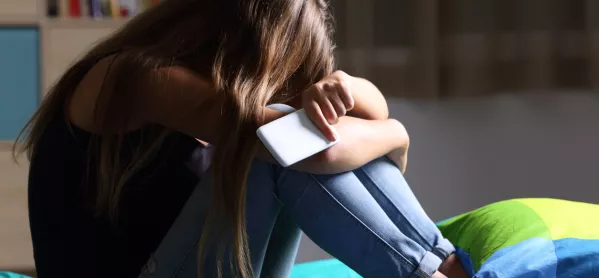Safeguarding post-Covid: what has changed for DSLs?

It will come as no surprise to read that September 2020 has been the most challenging and intense start to an academic year I’ve ever experienced.
And it wasn’t a surprise. We were aware that this would be the case and schools were prepared to provide bespoke recovery for our pupils. And yet, despite these preparations, none of us truly knew the impact of Covid-19 lockdown until our pupils walked through the door.
National lockdown placed a significant strain on children, parents and carers, triggering mental health issues, anxiety around health, finances and employment and a lack of social support and connections.
During this time, schools were unable to feed back to social services on the welfare of the child and provide support, and I’m sure I’m not the only designated safeguarding lead (DSL) who felt a strange sense of guilt that we could not be there for the pupils.
We knew that staff would not be able to identify early triggers for concern and provide school-based support or escalate it further when children needed us to.
Many of us continued working through the summer holidays, as stretched local authorities looked to us to provide further context to increasing numbers of children and families that had been brought to their attention.
I found myself questioning how many other children had faced challenges at home during lockdown and how many of these we would not discover until well into the autumn term. To help mitigate the problem, we put in place as much support as possible.
Building (and rebuilding) relationships
Since the pupils’ return to school in September, schools have invested time in ensuring that pupils reconnect and re-establish trusted relationships with staff.
The DSL’s role in school is frequently highlighted, even more so than pre Covid: our photographs placed on every corridor, emphasising that we are available, any time, to listen to any worries that pupils may have.
Some secondary schools have implemented a system on their school website whereby students can click and share a concern, which is triaged for need by the DSLs, a system that is reported to be successful.
A number of primary schools held Covid-secure one-to-one meetings with parents prior to the start of the new school year in order to begin re-establishing parent-teacher relationships.
These check-in meetings provided parents with an opportunity to share any experiences of lockdown that they felt may have affected their child and could potentially affect how their child responds to life in the classroom.
This enabled staff to be further prepared, providing context to any concerning issues that may arise over the coming months and assisted them in selecting areas of focus for PSHE lessons.
Gaining knowledge of pupils’ lockdown experiences and placing a deeper emphasis on frequently highlighting support available appears to be getting results. Many schools report that they have seen a rise in disclosures.
Focus on digital safety
The revised Keeping Children Safe in Education guidance raises the profile of mental health and online safety - and rightly so.
We know that many parents and carers struggled to balance home learning with their work commitments or simply couldn’t cope with the pressures of having their children at home 24 hours a day.
Therefore, unsurprisingly, where they have access to digital devices, children have spent more time online - using the internet to support learning, to play games or use social media in order to maintain connections with their friends and extended family.
At primary level, we have had an increasing number of pupils report the use of games that are unsuitable for their age or that they have seen inappropriate messages from friends. In my own setting, both have been particularly significant in, but not limited to, upper key stage 2.
We have dealt with this on an individual basis, speaking to parents in order to raise their awareness and to encourage supervision of their child’s online access.
Similarly, secondary colleagues have also reported an increase in disclosures from students around online safety and social media, raising concerns around online bullying or accessing inappropriate content, which in a number of cases has led to mental health issues that the school has needed external services such as Camhs to help support.
Online safety has been a key focus in PSHE and computing to ensure that all children develop an understanding of how to manage their online safety and how to share concerns.
Serious topics require direct approaches
Now is not the time for subtlety with regards to dealing with online safety and mental health. As a DSL, I feel that teachers must be explicit in our teaching of online safety to support safeguarding.
There are a wealth of resources out there and in some cases, there are some challenging conversations to be had. But these tough discussions are necessary and we must ensure that we support our pupils in order to have a positive impact on their mental health.
All schools need to assist their DSLs to fulfil their duties to respond to every notification of concern, and to assist staff with pupil recovery. This means signposting staff, students and families to the relevant resources, and if necessary provide further support for individuals or groups of pupils.
This pandemic will never be forgotten; it has affected all of us greatly. One thing we all need to make sure we get right today is safeguarding, because the children have never needed us more than they do now.

topics in this article
